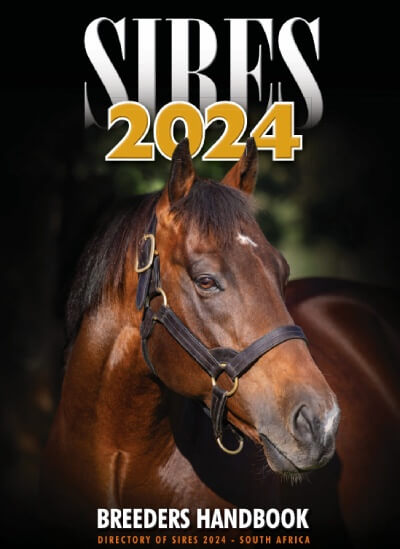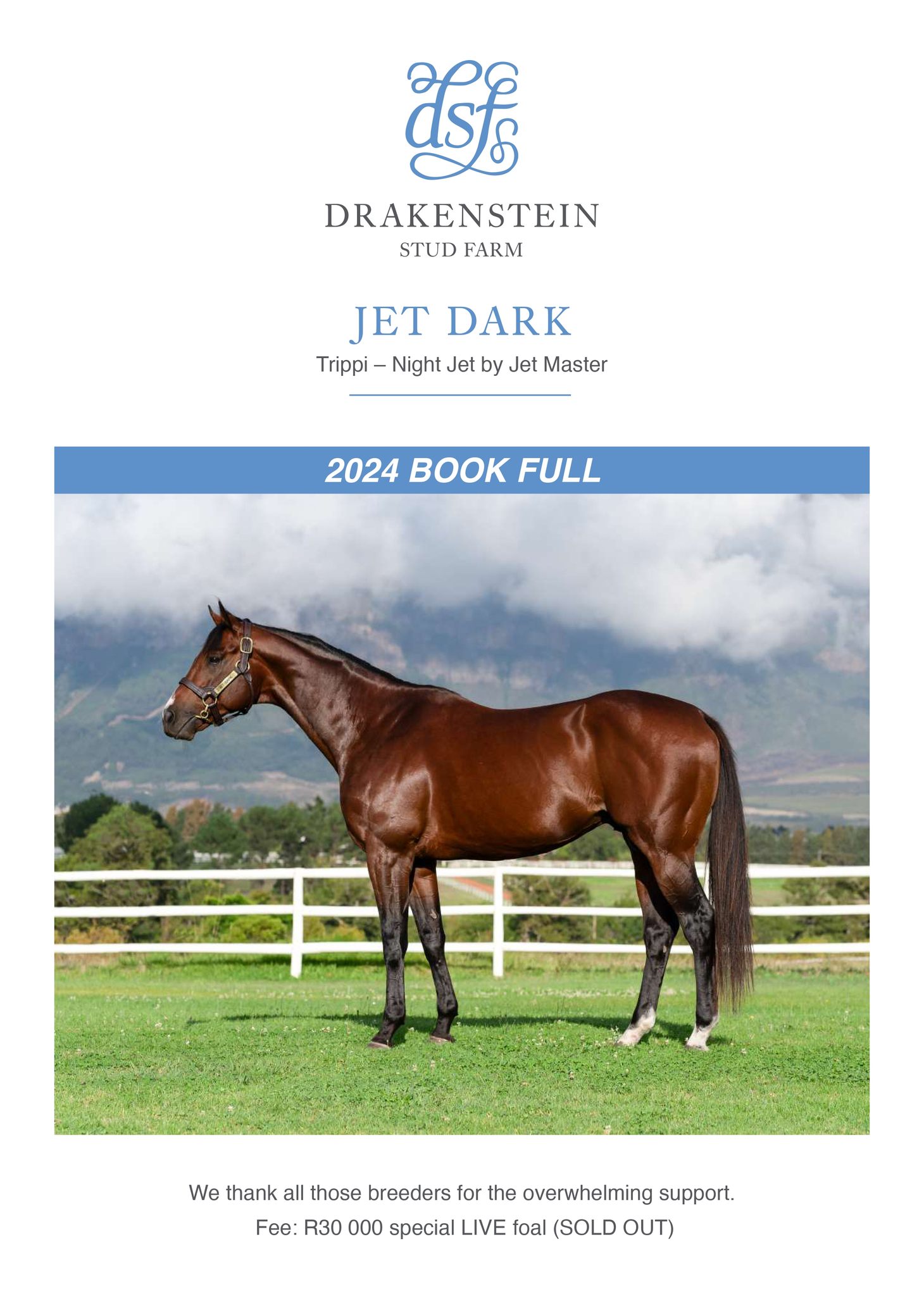Veteran racing journalist, and a respected published author, Charl Pretorius has been announced as the very deserved winner of the 2024 LKP Writer’s Competition.
The big prize includes 2 premium economy return flights from South Africa to London with transfers, 5 nights accommodation in London, 2 tickets to a hospitality facility at the Qatar Goodwood Racing Festival on Friday, 2 August with train transfers from London to Chichester.
Well done, Charl!

The Author toasting his big accolade
The lady nudged her partner and exclaimed, “It’s all, so… blue!”
She was standing in the ticketing queue on the infield at Hollywoodbets Kenilworth on L’Ormarins King’s Plate Day, 2024, looking across the track at hues of blue around the beautifully renovated grandstand, one hand shielding her eyes from the late-morning glare.
An amusing thought crossed my mind: “Seriously? Do you know where you are, lady?”
By her attire – a flowing, white summer dress with a light blue floral pattern that fluttered in the gentle breeze, she must’ve known. Her man, presumably her husband, donned a matching suit with a wide-brimmed hat. “Oh yes, darling, how splendid,” he said in a tone vaguely reminiscent of King Charles III in his Coronation Speech in 2023.
Smart and eloquent. Probably British, but forgiven if he, too, thought he was about to attend a race meeting at Glorious Goodwood.
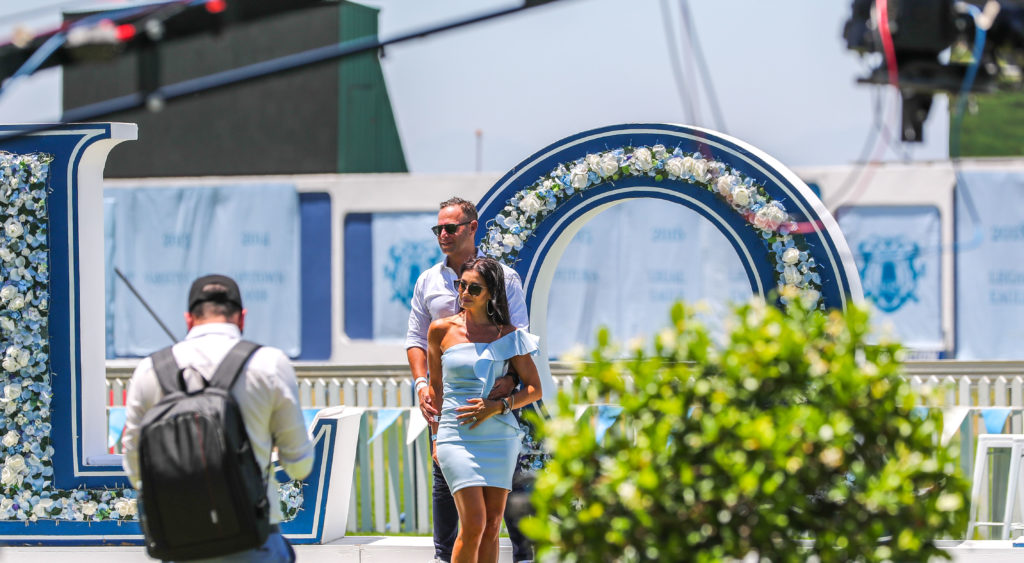
With blue armbands being fitted to keen wrists by exquisite young ladies in blue jockeys’ silks and white breeches, and anticipation buzzing under clear blue skies, another thought came: Why is it that expressions like ‘feeling blue’ or ‘having the blues’, describe sadness or melancholy? Is it because the great artist Pablo Picasso used blue in many of his paintings during what is known as his ‘Blue Period’ – 1901 to 1904?
During this time, he predominantly used various shades of blue to convey themes of sadness, poverty, and human suffering.
Perhaps Picasso started a trend in western culture, reinforced by a host of popular songs like Bernie Wayne’s 1950 hit, ‘Blue Velvet’, Neil Diamond’s ‘Song Sung Blue’ in 1972 and Elton John’s ‘I Guess That’s Why They Call It The Blues’ in 1985. And Mondays – sunny or cloudy – are, invariably, still, ‘blue’!
King Charles I of England (1600–1649) was associated with the colour blue because his personal emblem included a blue field with three fleurs-de-lis. Blue was Queen Elizabeth II’s favourite colour. For her, it denoted trustworthiness and authority. King Charles III wore a tailored blue suit with a floral blue tie when he delivered his Christmas message in 2023.
Gaynor Rupert and her teams at L’Ormarins and Drakenstein Stud have transformed blue from a colour into a soul-stirring sensation, characterized by grace, tranquility and stability; a splash of spunk and spirit added for good measure.
The 163rd Kings Plate unveiled its majestic canvas in a symphony of blue shades, woven into a vibrant tapestry. Every corner was adorned with the regal colour, each shade a testament to the event’s grandeur.
Horses thundered down the track, enveloped in a sea of blues, a spectacle that embodied the grace and power of this prestigious event. If Picasso was alive today, and had accepted an invitation to the King’s Plate, Hollywoodbets would lay short odds that he’d pick another colour for his wistful reflections.
I had to wonder if the organisers used a sophisticated pantone chart to blend their selection of serene shades so seamlessly into this day? There can be up to 270 different ‘blues’ on the pantone palette when they’re tinted for variations including vibrant azure, vivid cerulean and versatile teal. How did they do this, so well?
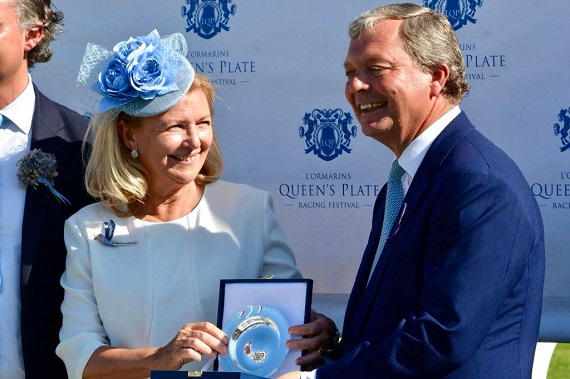
Near the railside entrance from the track stood a Light Blue 153 BMW Isetta, or ‘the bubble’, a micro mobility vehicle that is now a highly coveted vintage model from the Franschoek Motor Museum at L’Ormarins Estate. She took pride of place this year with a collectors’ item 1957 Mercedez Benz 220s (Dark Sky Blue) and a 1995 Chevrolet Bel Air (Light Sky Blue) parked on the infield.
Just a few steps away there was a cobalt blue and white gazebo where a four-piece outfit played some blues, jazz and soulful melodies, casting a relaxed and easy-going atmosphere over the growing gathering of event goers.
To their right, rows of bright blue umbrellas and tents with white-and-dark blue stripes contrasted against a bespoke carousel featuring white fibreboard ponies. The ponies’ manes, tails, and saddlecloths were painted in an interplay of butterfly blue and navy.
In the middle of the open luncheon area was a bar, well stocked and especially big on Cruz Vodka, poured from what looked like limited-edition, silky, royal blue bottles. “This is going to be our most popular drink today,” predicted Jesse, the attendant, asked what he thought the young crowd was going to be sipping. He fixed a refreshing kicker for me, mixed with lime and topped with an edible berry blue flower.
With some early courage gained, I tried to sneak under the imposing new parade ring arch and into the coveted saddling enclosure before the first race. I’d seen a beautiful photo of jockey Savanna Valjalo, published in a preview for the Okapi International Ladies Race by Sporting Post. Her eyes had struck me as being a most unusual light, arctic blue. There was an outside chance of looking into them while she waited here for trainer Justin Snaith and his connections.
Alas, two beefy paddock guards halted my miscalculated advances and I walked back out front to watch the pre-race parade from an orchid-blue seat on the stand, newly fitted. As it happened, Savanna won the contest on Gravity. Her success was a memorable thrill for early fans, and it set the tone for later arrivals, streaming through the gates.
It was off to the Syd Garrett Room where the racing media was hosted, comfortable and adequate with a nice view and a famous-brand coffee bar.
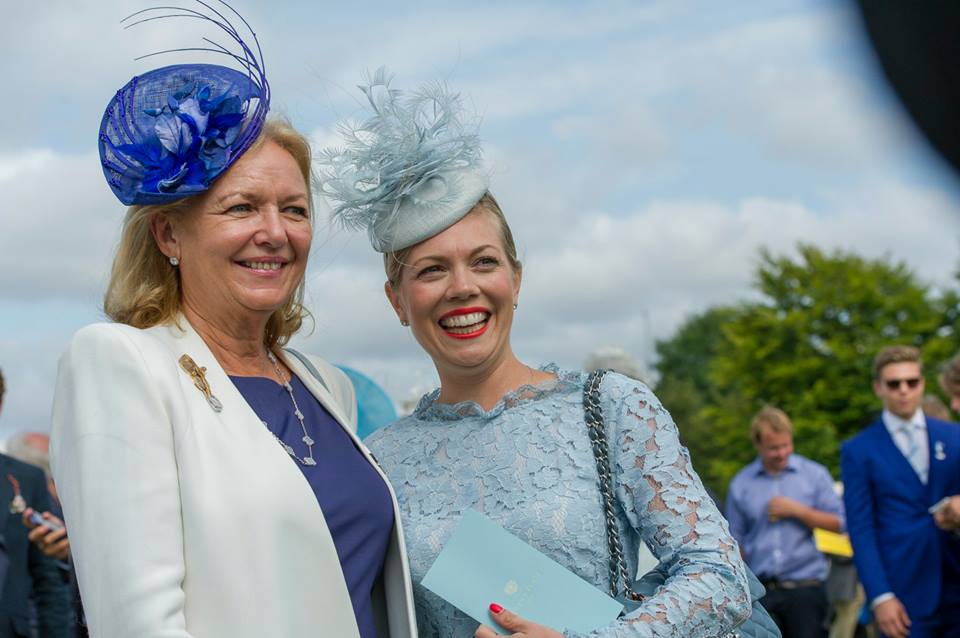
L’Ormarin’s Gaynor Rupert on left
To my surprise, however, accredited photographers were the only ones afforded parade ring access. I tried to bypass the rule with some name-dropping but witnessed a strange phenomenon: Every race day official I asked for a parade ring pass, raised brows, cleared throats and turned, like, indigo blue. Racing hacks, even the most charming among us, may soon be somewhat out of fashion with the advent of AI and writing bots. No, sir. No exceptions!
No problem, really, and in all fairness encouraging, because it showed that Cape Racing’s focused and disciplined drive to regain lost exclusivity is being carried out to the letter by its staff. They have made racing in the region special again, fast reviving a sport that carries the rare allure of fulfilling, high-profile entertainment attainable by people from all walks of life.
I joined breeder Jan Mantel in the Peninsula Room for a glass of Chardonnay and was struck, again, by the refined elegance of this event – flower arrangements in tableaus of mauve and lavender on the tables, mixed with turquoise, periwinkle and ultramarine and inviting guests to indulge in a sensory feast for both the eyes and the palate.
Drakenstein Stud’s runners compete in ‘Cornflower Blue’, a medium shade of blue named after the cornflower plant. Most online resources describe it as blue with a slightly purplish or greyish tint, similar to the colour of the cornflower’s blossoms. Its calming tones are associated with qualities like delicacy, simplicity, and elegance. On the track, let it be said, Drakenstein’s silks are associated with the same classic contours, but also with muscled strength, athleticism, speed and power.
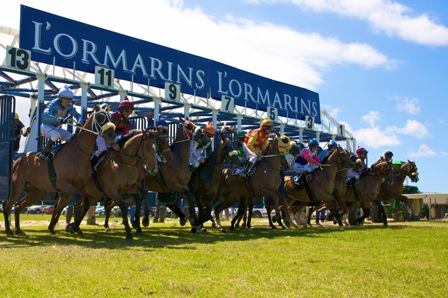
Just after 15h25, Drakenstein’s three-year-old Beach Beauty lined up in the day’s first major feature, the Grade 1 Cartier Paddock Stakes over 1800m. She produced a powerful finishing burst to run down the older superstar, Princess Calla.
An electric atmosphere was palpable on every level of the grandstand and throughout the surrounding areas in anticipation of the day’s top-billed contest between Drakenstein’s champion chestnut, Charles Dickens and his formidable adversary, See It Again in the L’Ormarins King’s Plate, due to take place next. The organisers had built in a fine tension-reliever. Six, pure white Lipizzaner stallions, draped in sapphire blue blankets, appeared on the lush green turf. They drew gasps with their beauty and stunning precision.
Just after 16:10 came the moment of richly deserved glory for Drakenstein Stud with the running of the main event. Drakenstein’s 24 years of sponsoring this awe-inspiring January spectacle culminated in a display of true thoroughbred athleticism to provide them Gaynor Rupert with her first success as an owner in the event’s renowned weight-for-age mile. Charles Dickens, in pursuit of the race leader, See It Again, surged forward from the middle of the pack, devouring the distance between them with each resounding hoofbeat.
He crossed the line with an air of nonchalance, almost three lengths clear to the roar of the appreciative crowd. “Record settled, record straight!” enthused race caller Alistair Cohen in reference to their series of legendary duels. In accepting the winning silverware, Gaynor conceded that this would go down as the most memorable race day of her life.
As the day drew to a close, the sun receded, and I made my way towards the car park. The buttresses of steel blue Table Mountain rose majestically over Kenilworth and its adjacent, leafy suburbs. Into the west, the Helderberg loomed in a distant, smoky blue.
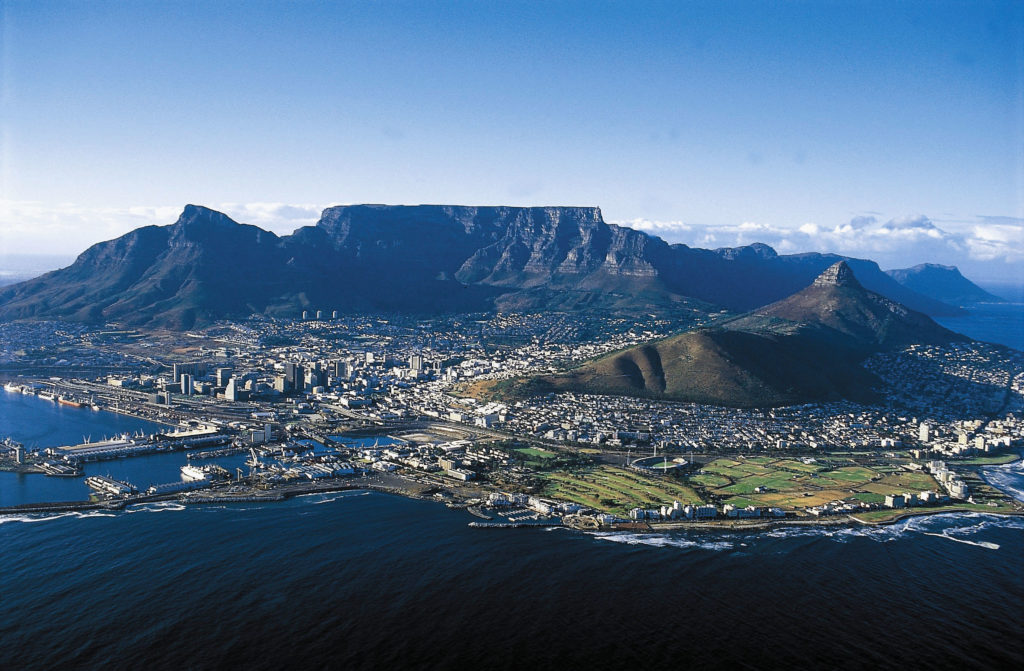
I caught sight of Gaynor, seated casually on a steel bench within the prize-giving enclosure. Her gaze was fixed on the Best Dressed and Best Hat presentations, where the finalists had embraced the blue theme with an enviable sense of style.
Gaynor herself was a vision of elegance in a white dress adorned with roses of cornflower blue, her head crowned with four roses of a lighter shade. It was at that moment another observation struck me: Perhaps the judges had overlooked the true winner.
With such grace and flair, Gaynor could have easily outshone the contestants herself. Yet, of course, that would have been against the rules. Also, although true, publicly saying so might be seen as flagrant brownnosing. Or, should I say, blue-nosing?






